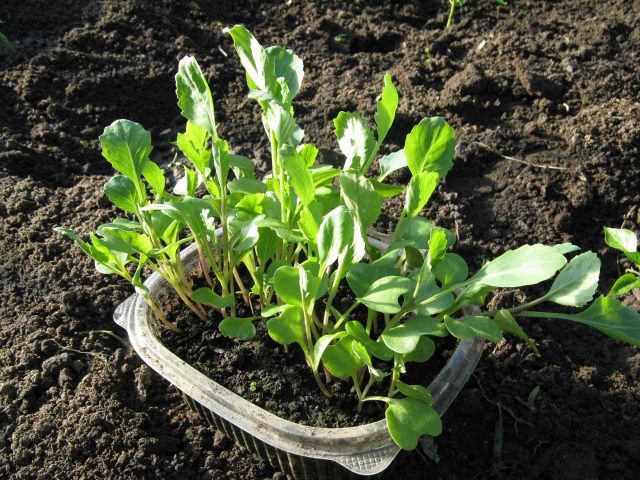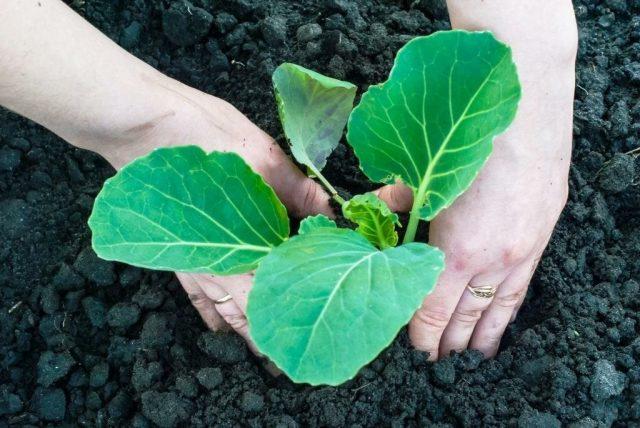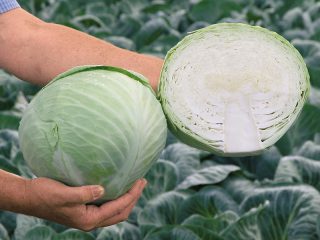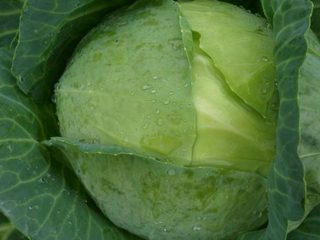Content
Gardeners begin to plant late cabbage for seedlings from about mid-April until the first days of May. This is the best time for the process of sowing in containers, which allows gardeners to get healthy sprouts, and then a good harvest. It is the late varieties of cabbage that summer residents often prefer for a number of reasons: they are unpretentious to the soil, take root in different climates, have an excellent taste, are stored fresh for several months and are suitable for any processing.

The time when to plant seedlings of late varieties of cabbage is chosen based on the growing region
Variety selection
There are quite a few varieties of late cabbage; the choice of which one to plant on the plot depends on the further purpose of its use. If a vegetable is needed for long-term storage and the gardener wants to get a high yield, then the Amager or Moscow late variety will be the best. If storage conditions are met, they can be stored without loss of commercial quality until spring, and are also ideal for cultivation in the European climate.
In cases where the harvest is planned to be processed, pickled or fermented, it is better to plant late varieties such as Askania F1 (Askaniia), Centaur F1 or Garantiya F1 (Garantiya). They also produce a good harvest and retain excellent taste after preservation.

Hybrid varieties of late cabbage differ in shelf life and taste characteristics
When to plant late cabbage for seedlings
It is best to plant late cabbage for seedlings, based on the recommendations of experienced gardeners, on favorable days according to the Lunar calendar. Since this vegetable crop ripens above the surface of the earth, it is advisable to plant it when the moon is waxing.
As for the regions, late cabbage can be planted in the central regions at the beginning of April, in the Moscow region - closer to the 15th, in the Urals - at the end of the month. In Siberia, the right decision to sow seeds of late varieties of cabbage will be in May.

The time for sowing late cabbage is affected by the variety and growing conditions.
Step-by-step instructions for growing late cabbage seedlings
Growing late cabbage seedlings at home should be carried out in compliance with all rules of agricultural technology. It is important to use high-quality soil, plant only fresh seeds, and it is better if they are purchased at a specialized store. You should also provide the necessary care for the plantings and plant the seedlings in a permanent place in a timely manner.
If all conditions are strictly followed, a good and large harvest will be guaranteed.
Soil requirements
The quality of seedlings mainly depends on properly selected soil. Therefore, before planting seeds, it is recommended to prepare the soil. It is better if it is bought in a store.
Late cabbage prefers fertile and light soil. The optimal mixture is an equal amount of peat, turf soil and sand. The last component, if desired, can be replaced with wood ash or humus.
Seed preparation
Before sowing late cabbage seeds for seedlings, they, like the soil, should be prepared. Why:
- Calibration. Leave the largest specimens.
- Disinfection and hardening. Soak in hot (+50 °C) water for a quarter of an hour, then plunge into cold water for a minute.
- Saturation with microelements. Leave it overnight in a solution of mineral fertilizers, and then put it in the refrigerator for a day.

Self-collected planting material usually requires preliminary preparation.
Planting late cabbage for seedlings
To obtain seedlings, cabbage can be planted in individual containers or small boxes. In the first case, when grown, it can be immediately placed in open ground; in the second, after growing, it is first picked up in individual cups, and after a couple of weeks it is planted in the beds.
Plant seeds are planted according to the following algorithm:
- Fill the prepared containers with soil.
- Moisten the soil.
- Seedlings are buried 1 cm, at a distance of at least 20 mm from each other.
- Lightly sprinkle with soil and compact.
- Cover with glass and maintain the room temperature at about +19 °C.
- After the sprouts appear, the shelter is removed, the seedlings are placed in a bright place, and the required care is provided for them.
If necessary, picking is carried out half a month after emergence.
Seedling care
Cabbage seedlings need to follow standard care rules:
- Watering. As they dry out, about twice a week, the sprouts should be moistened, avoiding excess water. After watering, loosen the soil slightly.
- Maintaining the microclimate. Until the real leaves form, the temperature in the room where the seedlings are kept is maintained at about +8 °C. Then it is increased to +15 °C during the day and +10 °C at night.
- Lighting. For normal development, seedlings need 12 hours of daylight. If there is a lack of natural light, the sprouts are additionally illuminated with special lamps.
- Fertilizer. As soon as a couple of leaves appear on the seedlings, it is useful to feed them with any complex solution. Next, the procedure should be repeated every 15-20 days, alternating mineral and organic fertilizers.
Planting seedlings in open ground
To reap a good harvest, it is important not only to observe the timing of planting late cabbage seeds for seedlings, but also to plant them in open ground on time. The culture is cold-resistant, so even in the northern regions, planting is carried out in the spring, usually towards the end of May or early June.
It is better to choose a place where to plant seedlings where garlic, onions, nightshades, carrots, legumes and pumpkin crops grew last season. On the day of transplantation, the sprouts should be watered, then placed with a lump of earth in pre-dug moistened holes and sprinkled with soil.

You can plant seedlings in beds when they already have four true leaves.
Conclusion
Late cabbage should be planted for seedlings, as well as in open beds, on time, and it is better to follow the recommendations of experts. This procedure is simple and even novice gardeners can do it. Provided that agricultural practices and quality care are followed, the harvest of late cabbage will be good and will last until spring.









